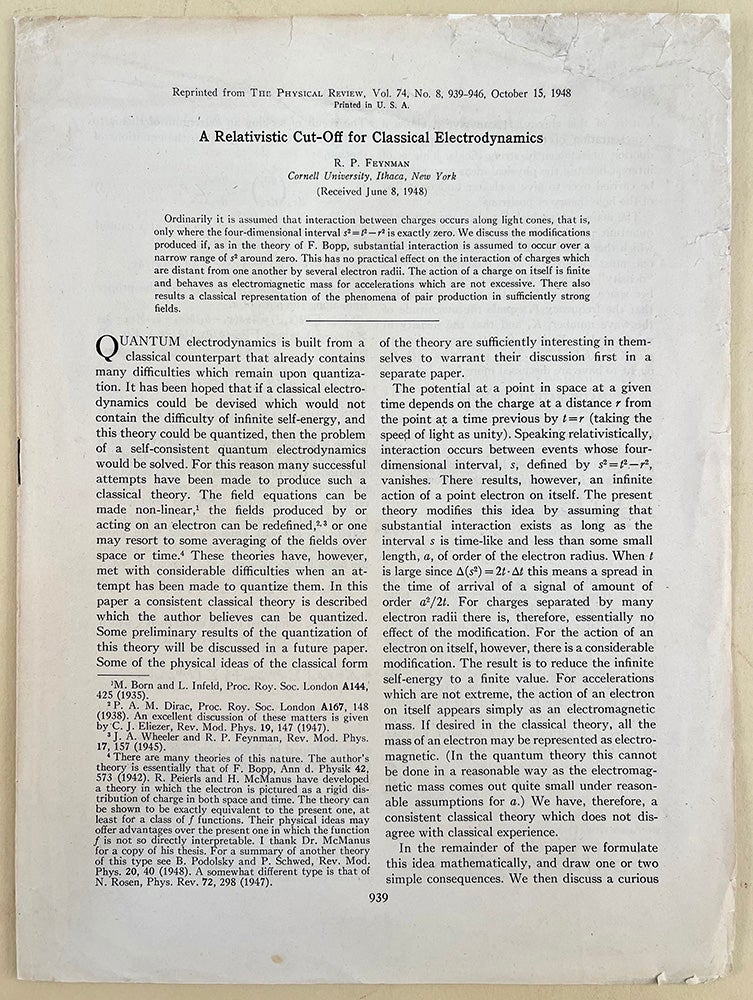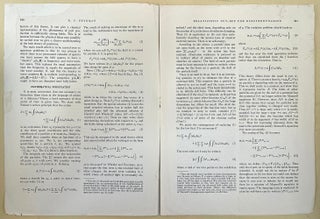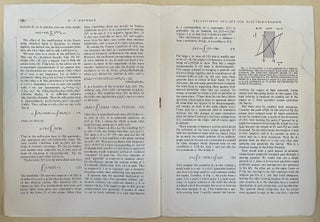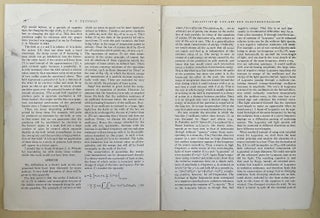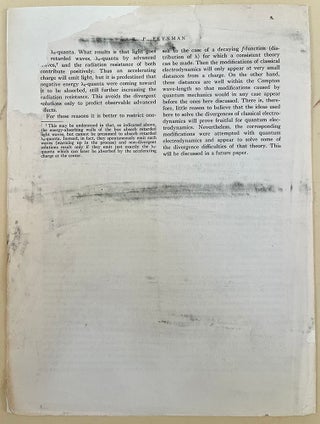A relativistic cut-off for classical electrodynamics. Offprint from Phys. Rev. 74
Publisher Information: 1948.
Feynman, Richard (1918-88). A relativistic cut-off for classical electrodynamics. Offprint from The Physical Review 74 (1948). 939-946pp. 265 x 202 mm. Without wrappers as issued. Upper corners and last leaf professionally repaired with loss of a four letters on the last leaf (not affecting legibility), last leaf a bit soiled, fore-edges a little frayed. Good copy.
First Edition, Offprint Issue of Feynman’s paper proposing a modification of classical electrodynamics to a form suitable for quantization. Feynman received the Nobel Prize for physics in 1965 (sharing it with Shinichiro Tomonaga and Julian Schwinger) for his fundamental work in quantum electrodynamics.
In the spring of 1948, prior to publishing any of his work on quantum electrodynamics, Feynman was invited to give a talk at the Pocono Conference on the problems of fundamental physics, which afforded him the first opportunity to present his ideas on QED to an audience of fellow physicists. By this time “Feynman had reworked almost all of quantum electrodynamics by his new technique of space-time diagrams. He had reached the most important part of his new results: namely, the relativistic formulation of quantum electrodynamics and, especially, perturbation theory, the relativistic cutoff and the renormalization of mass, closed expressions for the transition of amplitude and causal propagators, a new operator calculus . . . However, before the Pocono Conference, Feynman had not published anything on quantum electrodynamics and he did not have the mathematical proofs of all his results” (Mehra & Rechenberg, 6, p. 1051).
Unsurprisingly, Feynman’s unorthodox approach to QED baffled the attendees of the Pocono Conference, which included such titans of quantum physics as Niels Bohr and Paul Dirac. Feynman had such difficulty explaining his ideas that, as he recalled later “I said to myself, I’ll just have to write it all down and publish it, so that they can read it and study it, because I know it’s right!” (quoted in Mehra & Rechenberg, 6, p. 1057). In June 1948 Feynman published the present paper, which “dealt largely with the action-at-a-distance formulation he had worked on before getting involved with the war effort, but now with a density of field quanta playing the role of a regulator, so that the energy of a particle was made finite” (Mehra & Rechenberg, 6, p. 1092). Ezhela et al., Particle Physics: One Hundred Years of Discoveries, pp. 99-100. Mehra & Rechenberg, Historical Development of Quantum Theory, 6, pp. 1051-1093.
Book Id: 50966Price: $7,500.00

